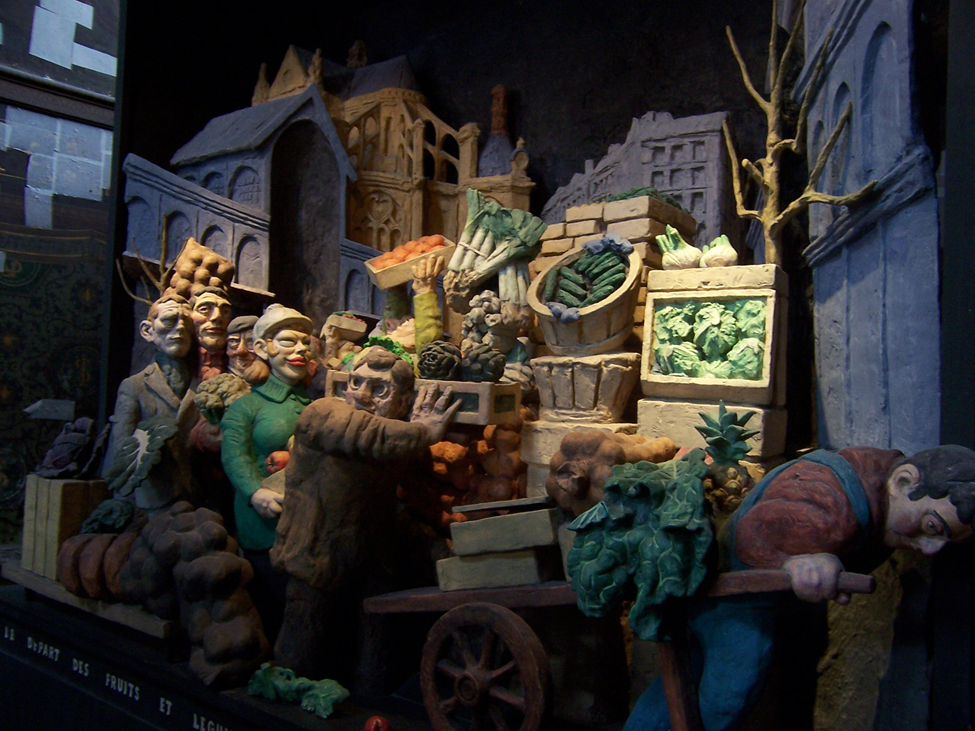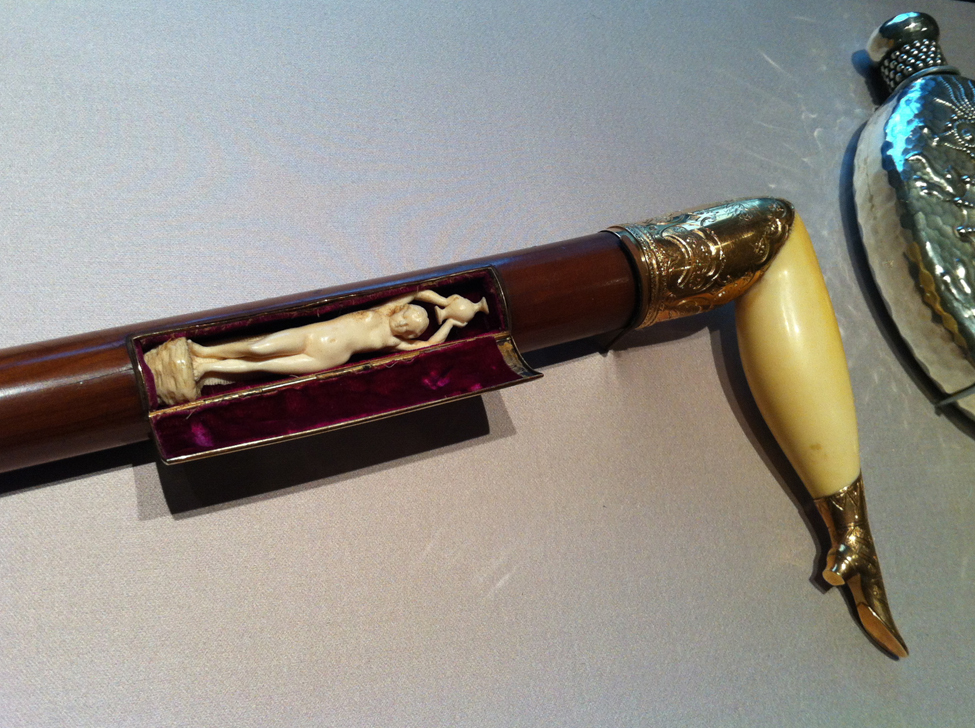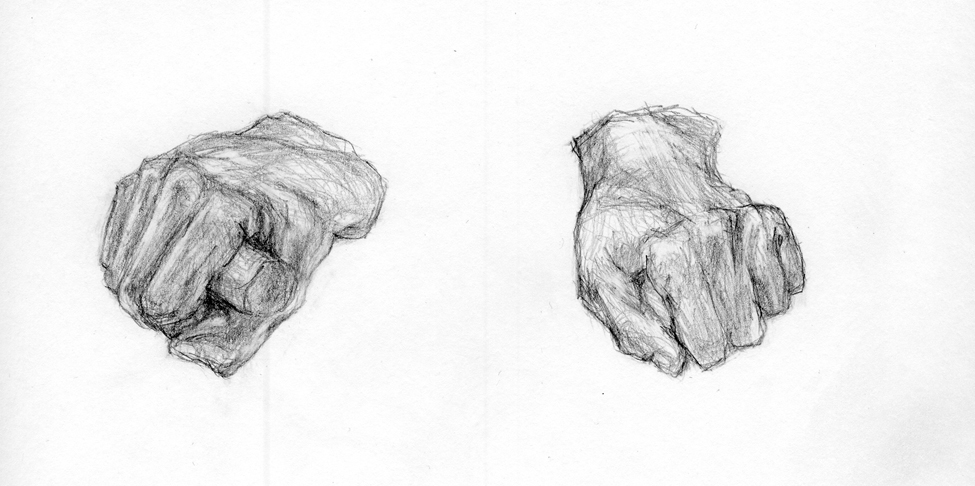
Enjambment: the technique, in Western poetry, of “striding over” an incomplete syntax to the next line. From jambe, French for “leg.”
Iamb, as in iambic pentameter, being the Greek word for metrical foot, one searches – thusfar in vain – for signs that it is etymologically related to the oh-so-visually similar and anatomically connected jambe.
Some enjambment evening. And Lady…
In any case, the game’s afoot, or, at any rate, legging it.
Look forward: one thinks one possesses one thing, but lacks another, that one is short of this and that.
Step back: one finds one can lead an easy life just by eating this bowl of porridge and wearing this garment.
A traditional saying quoted by Bisio in Decoding… taken from The Mystery of Longevity [or is it the other way round?] by Liu Zhengcai. Beijing: Foreign Language Press, 1996.
A million spells and talismans, when it’s simply a question of walking upright.
Ça ira!
And choliamb, mon amour, choliamb.
Rengo rengo pero vengo.

Crunch lay as he had left him. One arm was at his side, one arm lay stretched where Arthur had been. His breathing was slow and deep – yet Arthur sensed that Crunch was not entirely lost in sleep. Arthur crawled back into bed, pulling the covers back up. The moment he crawled into bed, Crunch, still sleeping pulled Arthur into his arms.
And yet, Crunch lay as one helpless. Arthur was incited by this helplessness, the willing helplessness of the body in his arms. He kissed Crunch, who moaned, but did not stir. He ran his hands up and down the long body. He seemed to discover the mystery of geography, of space and time, the lightning flash of tension between one – moment? – one breath and the next breath. The breathing in – the breathing out. The miracle of air entering, and the chest rose: the miracle of air transformed into the miracle of breath, coming out, into your face, mixed with Pepsi-Cola, hamburgers, mustard, whatever was in the bowels: and the chest fell. He lay there in this urgency for a while, terrified, and happy.
Writ Baldwin in Just Above My Head.
Marry Freddie… Hah!
But I’m so used to hear her say “Good morning” every day
Her joys, her woes, her highs, her lows
Are second nature to me now
Like breathing out and breathing in
I’m very grateful she’s a woman
And so easy to forget
Rather like a habit one can always break and yet
I’ve grown accustomed to the trace of
Something in the air
Accustomed to her face…
Sang Henry Higgins, taking the long way around GBS, via Alan Jay Lerner, oncet.
There is an oil painting hanging in the stairwell of the New-York Historical Society, that is nearly impossible to see. It is hung directly above a landing between floors, at the level where it would be visible if one were looking from the floor above. So, even though it is a large painting, about six feet wide by four high, one cannot, however much one cranes one’s neck, make out anything more than its rough composition. Added to which, an unfortunately placed ceiling lamp creates a large white reflection on the left side of the canvas. But when one does walk up to the next floor, one sees, parallel with the painting hanging twenty feet to one’s left, a placard about the painting: Louis Lang’s “Return of the 69th (Irish) Regiment, N.Y.S.M., from the Seat of the War, N.Y., 1862.”
“Shown against the dramatic backdrop of New York Bay, the scene captures the emotional and physical tumult that electrified the welcoming crowds. Indeed Lang’s mission to provide a complete impression of an actual urban event on such a scale is unmatched in nineteenth-century American art…
“The painting debuted in New York at Gupil’s Gallery in October, 1862, accompanied by a pamphlet that identified many of the people portrayed.”
Below this placard, a reproduction of the very pamphlet itself. Beneath a visual “key” to the picture is written:
“The 69th Regiment returned to the city of New York, early on the morning of the 27th of July, 1861, after a three months’ service in the South, landing at Pier No. 1 North River, from the Steamer John Potter; this incident gave scope to the artist ; allowing him to introduce the magnificent Bay of New York as seen from Bowling Green, between Castle Garden and Washington Hotel…
“Looking to the left of the picture, Castle Garden, now the first resting-place of the wearied emigrant, is seen beneath the luxuriant trees of that once popular resort of fashion.
The large Baggage Wagon, loaded with trunks and army chattels, contains two wounded soldiers ; the upper one (no.1) is Captain Braslin, attended by an Irish friend bearing a tumbler of water with which to cool his maimed shoulder ; the lower soldier (No. 2) is Sergeant Tracy, wounded in the thigh, aided by two Irish friends.
Back of this group (No. 3) is Grand Marshal Keenan mustering the Hibernian Societies to join the Procession. In front of him (no. 4) is Father O’Reilly, consolator of the afflicted and Chaplain to the Regiment ; a soldier near by quenches his thirst from a glass of Croton water offered by a water carrier.
(No. 5) Private White meeting his family, embracing his young babe ; his oldest son explaining to a boy why the bayonet of his father’s gun is broken and shattered.
(No. 6) In the centre of the Picture are the Drummer Boys of the Regiment, (all of them portraits). The boy with a broken Drum has since received a silver medal for his faithful services…
(No. 8) The officer with his arm in a sling, is Lieutenant-Colonel Nugent, now again at the seat of war.
(No. 9) Captain Thomas Francis Meagher, (now Brigadier General,) on horseback, returns the salutations of the citizens.
(No. 10) The private in front, deprived of one arm, assures his listeners, that maimed as he is, he may yet do good service to his country, which is rather doubted by one of the by-standers. The girl in front, offering fruits, has been introduced in order to represent the natural impulse of female nature, to reward instantaneously.
(No. 11) To the right of the last group, is the much-esteemed Orderly Sergeant Callagan (since wounded), who returned with a “Secesh” hat as a trophy, and through all his dangers his faithful dog has borne him company.
(No. 12) The blind Irish Bag-piper with his little daughter, (portraits,) and other girls who were present at the Procession…
(No. 13) The boy selling the portrait of General Corcoran (then a prisoner in Richmond) was not only a fact, but it enabled the Artist to have the Hero present by proxy in the Picture.
(No. 14) All the figures on the Balcony of the Washington Hotel, are likenesses of different Irish personages, including the Committee appointed to receive the Regiment…”
Formed in 1851 as a unit of the State Militia, “on April 23, 1861, the Regiment’s one thousand men departed for Washington D.C. in answer to President Lincoln’s call for volunteers to quash the Southern insurrection heralded by the Confederate attack on Fort Sumter.”
After its joyous reception at the Battery, the Regiment marched north from to their armory on Essex Street.
Almost exactly two years after the “return” of the 69th, and only days after (and at least partly in response to) the carnage of Gettysburg, New York City experienced a convulsion of violence known as the Draft Riots. Essentially an uprising by the city’s Irish working class against truly dehumanized social conditions – of which the imposition by Congress of an inequitable conscription system was the last straw – the proximate targets of mob rage were blacks and Protestants. The extraordinary destructiveness of this outburst is well documented elsewhere, and forms a strange narrative element within the city’s enduring myth of racial and ethnic tolerance, but some idea of the scale and quality of the insurrection may be gleaned from the fact that several militia regiments had to be diverted from the campaign in the South to quell it.
“Martial law ought to be proclaimed,” said the General in command of the Department of the East, “but I have not a sufficient force to enforce it.”
Among the more striking sculptures on display at the New-York Historical Society are bronze casts of Abraham Lincoln’s left and right hands. They were made from molds in 1860 as studies for a life-sized statue of the newly-elected president. Prior to the casting, Lincoln had spent the day shaking hands with the result that his right hand was extremely swollen. To minimize the distortion, the sculptor had him grasp a broom handle.
The hand’s a foot.
Seize. Grasp. Hand-mind.
Fearful symmetry, frame thy.
Fateful lightning, loosed the.
Me down.
Tote that barge.
Mind that gap.
Mama, Mama look at Uncle Joe
He’s doin’ that hand jive with sister Flo
Grandma gave baby sister a dime
Said, do that hand jive one more time…
1958, and just two shakes ahead of The Twist, Johnny Otis made Way Out Willie and his partner Rockin’ Millie famous for doin’ that crazy hand jive. A contemporary Daily Mirror article reported that the sardine-packed crowd at the Cat’s Whisker club in Soho would “hand-jive to the band as there’s no room for dancing.” Ken Russell, the British film director best dismembered for his hideously exploitative adaptation of Aldous Huxley’s The Devils of Loudon and who was then a freelance photographer covering the music scene, told a Manchester Guardian reporter: “the place was crowded with young kids… the atmosphere was very jolly. Wholesome… everyone jiving with their hands because there was precious little room to do it with their feet… a bizarre sight. The craze fascinated me. It seemed like a strange novelty; I used to join in.”
Is the hand the root or the tip?
And in the great shifting of questions, what do you do? becomes: What do you make? Becomes: What do you make with your hands?
This only applies to people who are breathing.
Hands: safe as houses.
I see you’ve got your fist out, say your piece and get out.
Guess I get the gist of it but it’s alright…
The shoe is on the hand it fits,
There’s really nothing much to it
Whistle through your teeth and spit ‘cause it’s alright…
Wrote the Grateful Dead’s Robert Hunter in “Touch of Gray.”
And there’s a hand, my trusty fiere!
And gie’s a hand o’ thine!
And we’ll tak a right gude-willy waught,
For auld lang syne.
Aye, Rabbie, aye.
